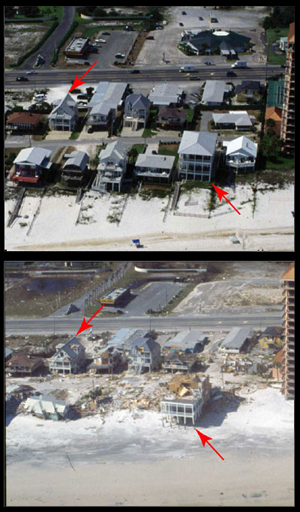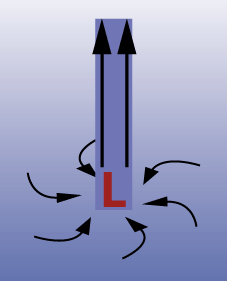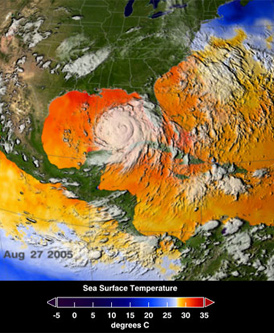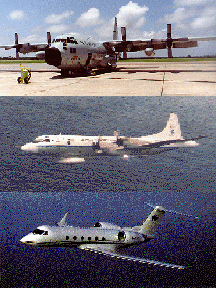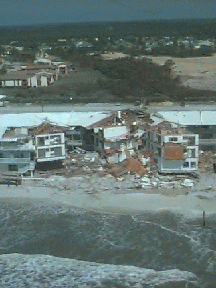Click on image for full size
Courtesy of US Navy and National Weather Service
Storm Surge
When a hurricane or other tropical storm approaches a coastline, sea level can temporarily rise as much as 20 or 30 feet higher than normal. This is called storm surge. The rising water may totally submerge low-lying areas and towns along the coast. Huge ocean waves cause damage too, demolishing docks, houses, roads, and eroding beaches. The storm surge water can also travel up rivers and flood areas further inland. Storm surge is considered the most dangerous aspect of a hurricane hitting a coast.
Storm surge occurs mainly when winds from a storm push ocean water towards the land. When the water is pushed into the shallow parts of the ocean, it doesn’t have anywhere to go to spread out and begins to pile up higher along the coast. A component of storm surge is also caused by the low pressure of the storm itself. When storm surge happens at high tide, the effects of flooding are greater. Storm surge happens typically when hurricanes and other tropical storms hit a coastal area, but it can also happen outside the tropics. Severe storms at higher latitudes can also produce storm surge, although the largest storm surge happens in the tropics.
How much storm surge will a hurricane produce? Scientists use a computer model called SLOSH (Sea, Lake, and Overland Surges from Hurricanes) to try to predict how storm surge will affect a coast. Important factors that determine storm surge include the speed of winds in the storm, the distance that those winds travel over the ocean water, how the hurricane approaches the coast (whether it is a direct impact or at an angle) the characteristics of the coastline and the shape of the shallow ocean floor.
Eventually, the storm surge waters retreat. The sea level returns to normal when the storms winds are no longer pushing water towards the land. Generally, storm surge lasts for 6-12 hours, but it can happen much more rapidly – on the order of minutes to an hour.







